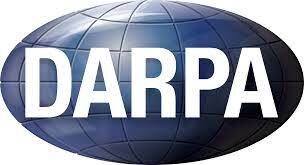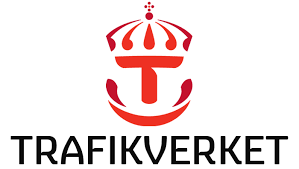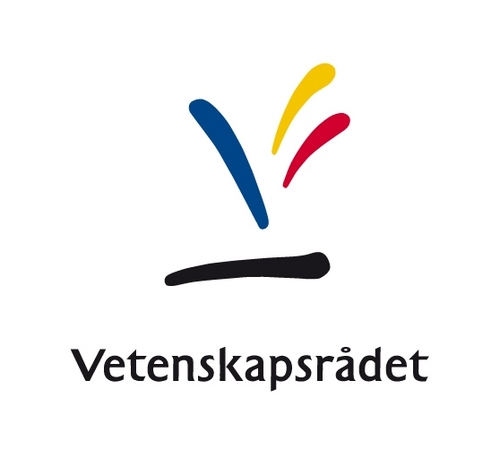The Search for Life
Is (or was) there life beyond Earth? The answer to this question leads underground on planetary bodies in our solar system. Planetary subsurface voids are one of the most likely places to find signs of life (both extinct and extant). Subsurface voids are also one of the main candidates for future human habitat for colonization beyond Earth. To this end, TEAM CoSTAR is participating in the DARPA Subterranean Challenge to develop fully autonomous systems to explore subsurface voids with a dual focus on planetary exploration and terrestrial applications in search and rescue, mining industry, and AI/Autonomy in extreme environments.
The Wallenberg AI, Autonomous Systems and Software Program (WASP) is a major national initiative for strategically motivated basic research, education and faculty recruitment. It is by far the largest individual research program in Sweden.
NEXT-GEN SIMS
NEXGEN-SIMS is a European Union-funded collaboration project together with several mining companies, equipment and system manufacturers and universities. The three-year project, called NEXGEN SIMS, will support new technologies, methods and processes that will enable a more sustainable and efficient carbon neutral mining operation.
A key aspect of the project is to develop autonomous carbon neutral mining processes. where robotics and automation will play a key role, including the use of battery-electric mining equipment, full utilization of 5G for optimal connectivity and positioning, autonomous drone inspections, autonomous material handling, AI powered traffic and fleet control and collaboration among machines.
Illumineation
illuMINEation will illuminate important digitalization aspects in underground mining operations in order to achieve the next level of safety, environment and economic performance, and to retain and gain a social licence to operate. The project will develop a robust multi-level distributed IIoT platform (including cloud computing & distributed cloud management) that connects via wireless communication with the physical mining world, defined by massively installed low-cost all-embracing sensor networks. Advanced analytical algorithms will support the implementation of powerful, sophisticated automated control systems. Mobile user interfaces, dashboards, augmented and virtual reality as well as digital twins will be utilised for data visualisation and operational control.
AERO-TRAIN
AERO-TRAIN fills gaps between the infrastructure O&M industry and Industry4.0 with the ambition to keep our invaluable assets operational and safe. The AERO-TRAIN general objectives are, in fact, to reduce the costs associated to O&M operations, while increasing the safety aspects related to the asset management. To achieve its objectives, AERO-TRAIN researches and develops automation technologies based on aerial manipulators and it identifies that the solution lays in the synergy between three main research pillars: Intelligent Mechatronics, Artificial Intelligence and Human-Machine Interaction. AERO-TRAIN will focus on developing new approaches for improving the robustness of aerial manipulators under conditions that reflect real application, such as the application of relevant forces for tool manipulation and robust perception in featureless and light challenging environments. Moreover, AERO-TRAIN takes a unique human-centered direction and it addresses the scientific issues related to increasing the maneuverability for remote aerial manipulation by development new immersive technologies, augmented and mixed reality for damage assessment by a remote expert, and collaborative human-machine intelligence for supported evaluation of criticalities.
FET-OPEN CompInnova
There is an innovative need for more efficient and reliable damage inspection, reducing time and cost of aircraft infrastructures, as well as maintenance-especially C and D Checks- without compromising the safety of passengers and goods transported. The CompInnova project is focused upon the development of an innovative inspection methodology, with automated and manual capabilities, for any type of composite and metallic aircraft structures. The novel structural integrity approach is comprised by three parts: a qualified Phased Array (PA) and Infrared Thermography (IRT) method attached to a mobile Vortex robot, a Damage Tolerance (DT) structural integrity assessment technique processed on a computer and an innovative repair system.
DRONESAFE proposes the development of autonomous drones, equipped with gas sensors, to monitor gas toxicity levels or specific areas in BOLIDEN's open pit mine in Aitik, Sweden after blasting. To break Swedish deposits both at increasing depth with increased productivity and safety, DRONESAFE focuses on optimizing methods in the blasting cycle and ensuring the safety of personnel during gas monitoring.
RIT 2021 is a collaborative EU funded project with the objective to create sustainable growth in the region of Norrbotten and enhancing its role as Sweden’s leading space region. The partners belong to the academic sector, the business sector and actors within the innovation support system.
EDIS - Electric Flights and Drones in Community Service
Drone technology, remote control, automation and autonomous vehicles are areas with a growing interest globally. LFV FoI has already successfully completed a number of projects in areas such as sustainability, safety and reduction of running costs for airports. This project aims at moving new technology from the framework of the airport out into practical use for the community. The project focus lies on the use of electric drones / eVTOL (Electric Vertical Take-off and Landing) with range and speed capabilities by far exceeding the standard today. These capacities open up for new application areas within emergency / rescue operations as well as long range scheduled missions to watch for forest fires and inventory of forest status for the industry.
ROBOSOL - Collaborative Robotic Solutions for the development of Sustainable micro, SME and large scale industries
The main objective of the RoboSol project is to increase the international competitiveness and capacity of the companies in the Interreg Nord area. The goal is also to promote equality in the labor market through technologies that support sustainable development, such as digitalisation, next-generation robotics and intelligent automation.
DROSAMO
Drone safety monitoring systems for Arctic mining.
MIRAI 2.0 is a collaboration between 19 Swedish and Japanese universities, aiming to contribute to long-term research collaboration and to promote Sweden and Japan as nations of world-leading large-scale research infrastructure. MIRAI 2.0 (2020-2022) builds on the former MIRAI project (2017-2019) and aims to develop and expand the collaboration activities further.
G-DRONES
G-DRONES aims to demonstrate the autonomous operation of the rapid deployment of aerial robotic solution for aerial inspection of areas after blasting and the overall integration of this technology to the current mining production systems.
The name Elise is an acronym for “Elektrisk Lufttransport i Sverige” (Electric Aviation in Sweden). The project is funded by the Swedish innovation agency Vinnova.
Elise are building an electric aircraft in Sweden. It is a collaboration between Chalmers University of Technology, KTH – Royal Institute of Technology, Linköping University, Luleå University of Technology, Uppsala University, the Civil Aviation Administration and RISE Viktoria research institute with the aerospace industry and other actors.
In the future, electric flights will be able to accommodate short-haul transports and contribute to achieve the global sustainability goals in Agenda 2030 by reducing emissions and noise, developing sustainable and innovative industries, and enhancing urban-rural interaction.
Sweden has a strong aerospace industry and a transport infrastructure that relies on air travel. The project joins the aerospace industry and technology companies with authorities, health services, police, fire brigades, urban planners, energy companies and transport companies to evaluate how electric aircraft technology best can serve Sweden.
The idea is that in the future, electric flights will be able to be used in shorter distances and contribute to reduced carbon dioxide emissions and also to reduced noise.
Past Projects
H2020-SC5-2016-2017 SIMS
The SIMS project aspires to create a long lasting impact on the way we test and demonstrate new technology and solutions for the mining industry. With a selected consortium ranging from mining companies, equipment and system suppliers to top-class universities, the SIMS project will boost development and innovation through joint activities aiming at creating a sustainable intelligent mining system, test and demonstrate new innovative technologies within the designated consortium, consisting of well developed mining operations, selected due to their maturity regarding innovative technologies, world-leading equipment and system suppliers, highly specialised SMEs and top-class universities.
Objectives: Efficiency - To increase resource efficiency and competetiveness Safety - To reduce the risk of rock falls and exposure of workers to hazardous situations Environment -To minimise environmental impact of mining operations Trust - To increase public trust, awareness and acceptance for mining. How: We address the call intelligent mining on land and aim to develop, test and demonstrate relevant technologies all aiming at realising the vision of the intelligent mining system. To meet the project vision and support EU strategies as outlined in the call we have addressed the project objectives by selecting pilot test areas and tests that will support this. Relevance: Specific challenge Raw materials “Innovative pilot actions”: We will bring the most innovative new products in the area of mining and test these in a real life environment in the selected test mines.
ICT - Robotics: Collaborative Aerial Robotic Workers
AEROWORKS envisions a novel aerial robotic team that possesses the capability to autonomously conduct infrastructure inspection and maintenance tasks, while additionally providing intuitive and user-friendly interfaces to human-operators. The AEROWORKS robotic team will consist of multiple heterogeneous “collaborative Aerial Robotic Workers”, a new class of Unmanned Aerial Vehicles equipped with dexterous manipulators, novel physical interaction and co-manipulation control strategies, perception systems, and planning intelligence. This new generation of worker-robots will be capable of autonomously executing infrastructure inspection and maintenance works. The AEROWORKS multi-robot team will operate in a decentralized fashion, and will be characterized by unprecedented levels of reconfigurability, mission dependability, mapping fidelity, and manipulation dexterity, integrated in robust and reliable systems that are rapidly deployable and ready- to-use as an integral part of infrastructure service operations.
As the project aims for direct exploitation in the infrastructure services market, its results will be demonstrated and evaluated in realistic and real infrastructure environments, with a clear focus on increased Technology Readiness Levels. The accomplishment of the envisaged scenarios will boost the European infrastructure sector, contribute to the goal of retaining Europe’s competitiveness, and particularly impact our service and industrial robotics sector, drastically changing the landscape of how robots are utilized.
SPIRE - IPC: Integrated Process Control based on Distributed In-Situ Sensors into Raw Materials and Energy
With the DISIRE project the properties of the raw materials or product flows will be dramatically integrated by their transformation in a unique inline measuring system that will extend the level of knowledge and awareness of the internal dynamics of the undergoing processes taking place during transformation or integration of raw materials in the next levels of production. In this approach, the Integrated Process Control system, instead of having external experts to tune the overall processes, based on the DISIRE concept will enable the self reconfiguration of all the production lines by the produced products itself.
Specific DISIRE Process Analyzer Technology (PAT) will be able to define quality and performance requirements, that for the first time in the process industry will be able to be directly applied on the physical properties of the developed products and thus enabling the overall online and product specific reconfiguration of the control system. In this way, the whole production can be fully integrated in a holistic approach from the raw materials to the end product, allowing the multiple process reconfigurations and an optimal operation based on the product’s properties that can be generalized in a whole product production cycle being spanned in multiple cross- sectorial processes.
Multimodal Robotics
This project is a direct collaboration among HONDA HRI and LTU - Robotics in order to define and implement novel concepts of multimodal robotic vehicles. The project duration is 3 years.
New Understanding of Motor Control and Falls by Novel Postural Sway Analysis, Robotics and Mathematical Modelling
Falls and fear of falling pose major threats to health and independence among elderly people. Our objective is to gain further knowledge regarding balance control aspects on fall risk and fear of falling by 1) assessing postural sway and control mechanisms in static and dynamic tests, 2) creating a robotic humanoid with artificial muscles and electronic control systems and 3) establishing a mathematical formulation of balance control and experimentally evaluate it on the robotic humanoid. This will be undertaken by a close co-operation between Physiotherapy and Automatic Control researchers. The construction of a humanoid robot designed to mimic human biomechanics and motor control system will allow us to test various motor control theories and also to investigate the effects on the postural control and postural sway when perturbations, sensory and motor reductions and noise is experimentally introduced, mimicking physiological changes related to ageing.
VICON - Field Robotics Lab
The Outdoor Motion Capture System (O-MCS) is focusing in the area of fundamendal Field Robotics in unstructured and dynamical environments, with large scale robots under experimental evaluation scenarios in real life applications. Characteristic robotic examples can be extracted from the fields of constructions, mining, forestry, agriculture, automotive, military and space.
The O-MCS areas of interest include: a) Autonomous and Remote Navigation, b) Path planning and localization, c) inspection robotics, d) machine automation, e) assisting robotics, f) networked controlled systems, g) remote control robotics, h) wireless sensor and actuator networks.
The acquired O-MCS is a flexible, mobile and easily deployable system, which consists of 20 T40 Vicon cameas and it is considered to be the biggest outdoor motion capture system of its kind in Sweden and one of the bigest in Europe.
Pneumatic Muscle Dancer
This is a project that combines principles from the area of biomimetic robotics and arts, with an overall aim to design and develop a Robotic Dancer based on the technology of Pneumatic Muscle Actuators in order to replicate the naturallity and the elegance of a human dancer. This stage will focus in the mechanical construction and fully automation of the upper body experimental platform of the dancer.
Industrial Post Doc from PIIA (Process Industrial IT and Automation)
The aim of this project is to fund a Post Doc position with a general focus on Reconfigurable Process Control Systems and Wireless Sensor Networks. The duration of the project is 2 years, starting from 2016.
Reconfigurable ROS-based Resilient Reasoning Robotic Cooperating Systems
European manufacturing industry faces increasing product variances resulting as a consequence of frequent innovation, short product lifecycles, small series production, and shrinking production cycles. At the same time, production cost must be continuously reduced. Agile, transformable and re-usable automation and robotics is be a key enabler to manage those trends. However, few robotic components are designed for easy adaptation and reuse. To overcome those shortcomings, R5-COP focuses on agile manufacturing paradigms and specifically on modular robotic systems. Based on existing and newly developed methods for a formal modeling of hardware and software components, R5-COP will support model-based design, engineering, validation, and fast commissioning. Furthermore, using existing interface and middleware standards such as ROS, R5-COP will strongly facilitate integration of components from various suppliers. The proposed modular approach will not only be more flexible than state-of-the-art solutions, but will also reduce design, setup, and maintenance costs. Flexible use of robots naturally includes their close cooperation with humans. Therefore, robustness and safety are crucial requirements which will be assured by dedicated verification and validation methodologies. The formal specification framework will support component suppliers in efficiently verifying and certifying their modules. R5-COP will help to identify and develop reconfigurable key hardware and software components, and to show the feasibility and capability of the approach in living labs in manufacturing and service demonstrator environments.
Development of an Autonomous UGV
This project is a collaboration between LTU and the Swedeish Space Coorporation towards the development of an Autonomous Unmanned Ground Vehicle. The developments are based on a real scale Toyota Land Cruiser and the project will aim in demonstrating the ability of cyberphysical systems in real size and real life application of autonomous robots in search and rescue missions.
Localization for Autonomous UAVs Systems in Underground Mining
The purpose of the suggested pre-study is to: a) Identify the current state of the art and to verify applicable and reliable existing methods and technologies for performing localization of autonomous Unmanned Aerial Vehicles (UAVs), in underground harsh mining environments and b) identify what further technological and research developments are required in order to develop mining solutions based on autonomous UAVs, improving the underground mining production process
Robotics in Elderly Homecare Services in Northen Finland and Sweden
The aim of this project is to survey and analyze the current status of business and technology RDI activities related to elderly telecare services, cheap home robots, smart metering solutions and the stakeholders' needs involved in providing services to seniors living at home. The project is going to enhance the development of fruitful co-operations and will enable the implementation of bigger joint projects in the future.
Mine Patrolling Rovers
The aim of this project was to provide the means for supporting the mine operation by a fleet of patrolling robots that could navigate autonomously throughout the mine area and perform multiple tasks that until now are being carried by humans. These robots will be equipped with specific vision and sensing sensors and could execute the tasks of: a) simultaneous mine mapping updating, b) structural health and safety monitoring, d) evaluation of air quality, and e) continuous monitoring of the mine infrastructure and the relevant applications, f) search and rescue operations on an emergency event, and g) specific ad-hoc defined tasks. This project has been funded by Hjalmar Lundbohm Research Center (HLRC) sponsored by LKAB.






































